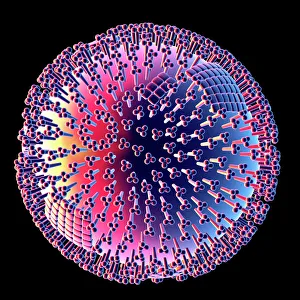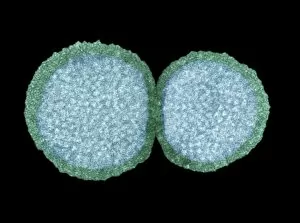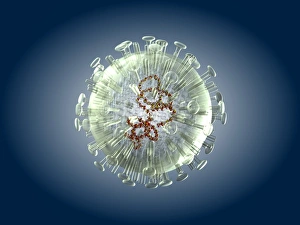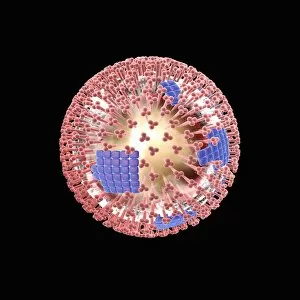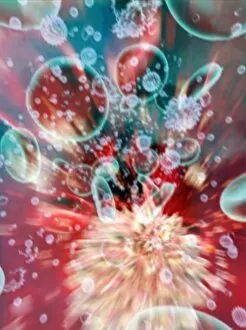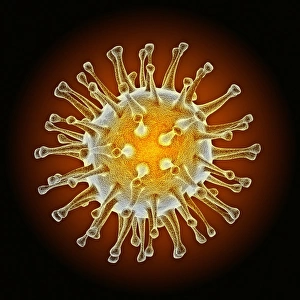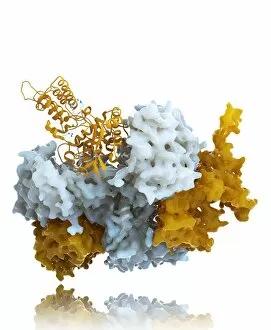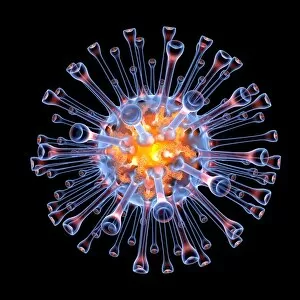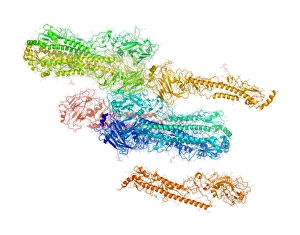Avian Flu Collection
"Unveiling the Avian Flu: Exploring the Intricacies of an Influenza Virus through Computer Artwork" In Cellardyke, Fife, Scotland
All Professionally Made to Order for Quick Shipping
"Unveiling the Avian Flu: Exploring the Intricacies of an Influenza Virus through Computer Artwork" In Cellardyke, Fife, Scotland, a captivating glimpse into the world is revealed. Through intricate computer artwork, we delve into the realm of influenza virus particles under a transmission electron microscope (TEM). These mesmerizing images showcase the true nature and complexity of this notorious virus. A tablet computer becomes our window to understanding as it displays a flu virus particle labeled F006/6309. The juxtaposition with an MRI brain scan reminds us of the potential impact on human health that they are have. The TEM imagery further captivates our attention by unveiling both influenza and bird flu virus particles in stunning detail. The artistic representation of C013/4650 showcases the intricate structure and beauty hidden within these microscopic entities. Tragically, even majestic creatures like Whooper Swans are not immune to its grasp. A dead adult swan found in Bulgaria in February serves as a haunting reminder that avian flu knows no boundaries. As news spreads across borders, fears escalate about bird flu arriving in Britain. The threat looms large as we come face-to-face with this relentless avian influenza virus. Through these visuals, we gain insight into the enigmatic world surrounding H5N1 avian influenza virus particles - their shape and composition unraveled before our eyes through TEM technology. Avian flu remains a constant challenge for scientists worldwide who tirelessly work towards finding effective prevention strategies and treatments against this menacing disease. As research continues to unfold, let us remain vigilant in combating this formidable adversary – one that has left an indelible mark on both humans and wildlife alike.

